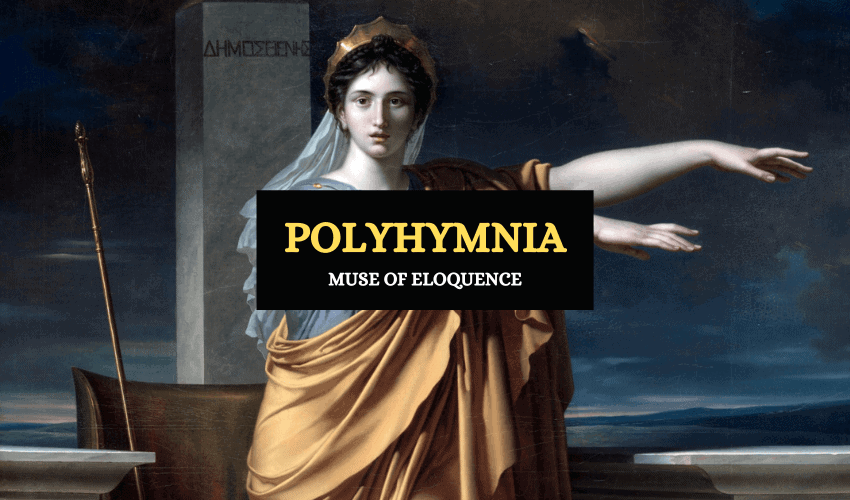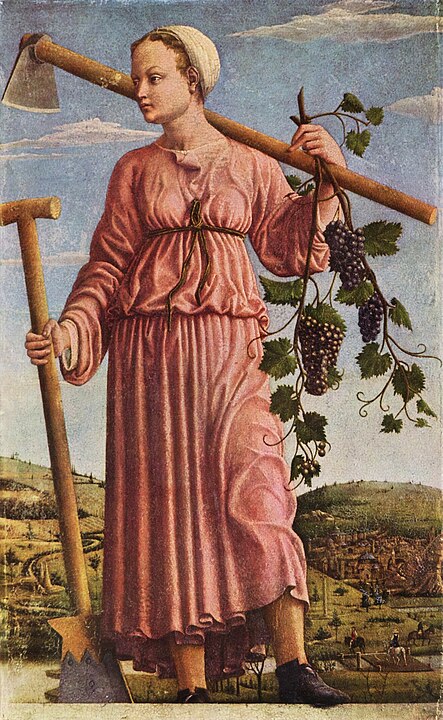
Table of Contents
In Greek mythology, Polyhymnia was the youngest of the Nine Muses, who were the goddesses of science and the arts. She was known as the Muse of sacred poetry, dance, music and eloquence but she was more famous for inventing her own hymns. Her name was derived from the two Greek words ‘poly’ and ‘hymnos’ which mean ‘many’ and ‘praise’, respectively.
Who Was Polyhymnia?
Polyhymnia was the youngest daughter of Zeus, the god of thunder, and Mnemosyne, the goddess of memory. As stated in the myths, Zeus was very much taken by Mnemosyne’s beauty and visited her for nine consecutive nights and on each night, she conceived one of the nine Muses. Mnemosyne gave birth to her nine daughters nine nights in a row. Her daughters were just as beautiful as she was and as a group they were called the Younger Muses.
When the Muses were still young, Mnemosyne found that she couldn’t take care of them by herself, so she sent them to Eupheme, the nymph of Mount Helicon. Eupheme, with the help of her son Krotos, raised the nine goddesses as her own and she was their motherly figure.
In some accounts, Polyhymnia was said to have been the first priestess of the goddess of harvest, Demeter, but she was hardly ever referred to as such.
Polyhymnia and the Muses

Polyhymnia’s siblings included Calliope, Euterpe, Clio, Melpomene, Thalia, Terpsichore, Urania and Erato. Each one of them had their own domain in the arts and sciences.
Polyhymnia’s domain was sacred poetry and hymns, dance and eloquence but she was also said to have influenced pantomime and agriculture. In some accounts, she has been credited for influencing meditation and geometry as well.
Although Polyhymnia and her eight other sisters were born in Thrace, they mostly lived on Mount Olympus. There, they were often seen in the company of the sun god, Apollo who had been their tutor when they were growing up. They also spent time with Dionysus, the god of wine.
Depictions and Symbols of Polyhymnia
The goddess is often depicted as meditative, contemplative and very serious. She’s usually portrayed dressed in a long cloak and wearing a veil, with her elbow resting on a pillar.
In art, she has often been depicted playing a lyre, an instrument which some say she invented. Polyhymnia is mostly depicted together with her sisters singing and dancing together.
Polyhymnia’s Offspring
According to the ancient sources, Polyhymnia was the mother of the famous musician Orpheus by the sun god, Apollo, but some say that she had Orpheus with Oeagrus. However, other sources claim that Orpheus was the son of Calliope, the eldest of the nine Muses. Orpheus became a legendary lyre-player and it’s said that he had inherited his mother’s talents.
Polyhymnia also had another child by Cheimarrhoos, the son of Ares, the god of war. This child was known as Triptolemus and in Greek mythology, he was strongly connected with the goddess Demeter.
Polyhymnia’s Role in Greek Mythology
All of the nine Younger Muses were in charge of different areas in the arts and sciences and their role was to be a source of inspiration and help to the mortals. Polyhymnia’s role was to inspire mortals in her field and aid them to excel. She participated in the divine inspiration prayers and she could wave her arms about in the air and pass a message to others without using her voice. Even in complete silence, she was able to sketch a graphic picture in the air that was full of meaning.
According to Didorus of Sicily, the ancient Greek historian, Polyhymnia helped many great writers throughout history to achieve immortal fame and glory by inspiring them in their work. Accordingly, it was thanks to her guidance and inspiration that some of the greatest literary texts in the world today came into existence.
Another important aspect of Polyhymnia’s role was to entertain the Olympian deities on Mount Olympus by singing and dancing at all celebrations and feasts. The Nine Muses had the ability to use the grace and beauty of the songs and dances they performed to heal the ill and comfort the brokenhearted. However, not much is known about the goddess and it seems she didn’t have her own myths.

Polyhymnia’s Associations
Polyhymnia has been mentioned in several great literary works such as Hesiod’s Theogony, the Orphic Hymns and the works of Ovid. She also features in the Divine Comedy by Dante and is referenced in numerous works of fiction in the modern world.
In 1854, a French astronomer called Jean Chacornac discovered a main asteroid belt. He chose to name it after the goddess Polyhymnia.
There’s also a spring dedicated to Polyhymnia and her sisters, located above Delphi. The spring was said to have been sacred to the Nine Muses and its water was used for divination by the priests and priestesses.
In Brief
Polyhymnia was a lesser-known character in Greek mythology, but as a side character, she was credited with inspiring some of the greatest works in the liberal arts known to man. In ancient Greece, it’s said that those who know her continue to worship the goddess, singing her sacred hymns, with the hope of inspiring their minds.








